Scott Smith breaks down the biggest draft steals in Buccaneer history.
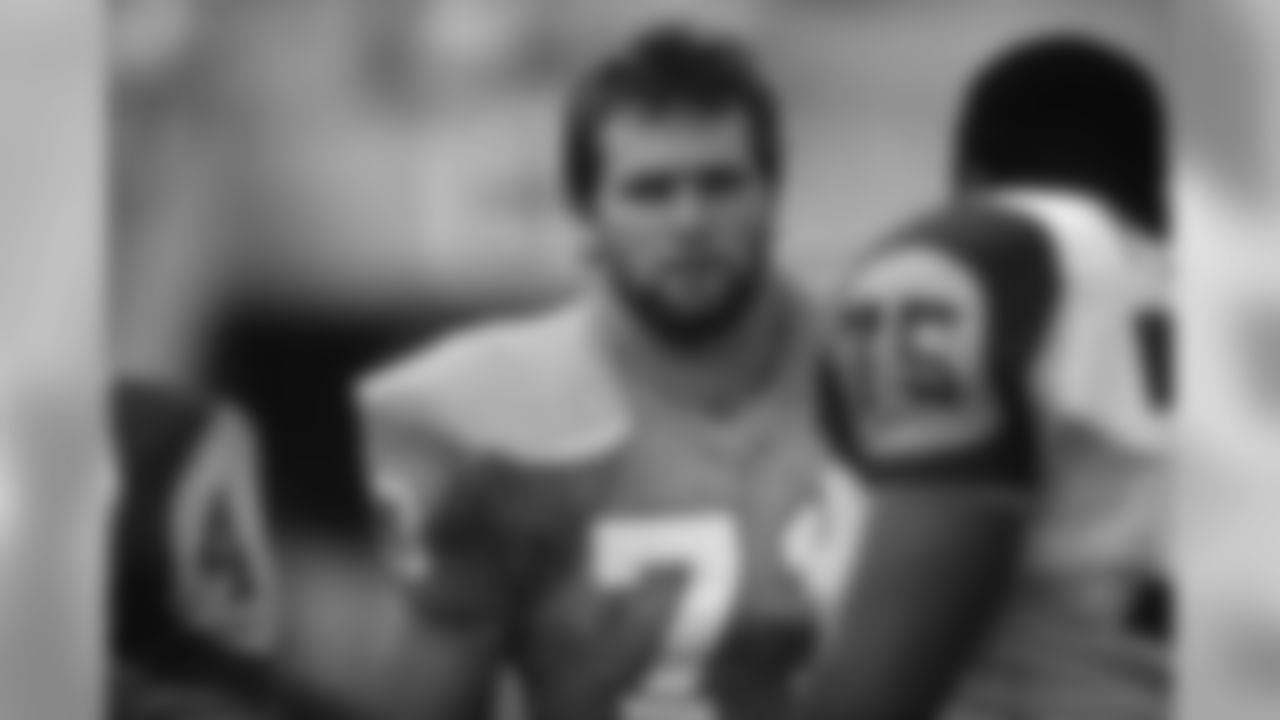
10 - OT Ron Heller
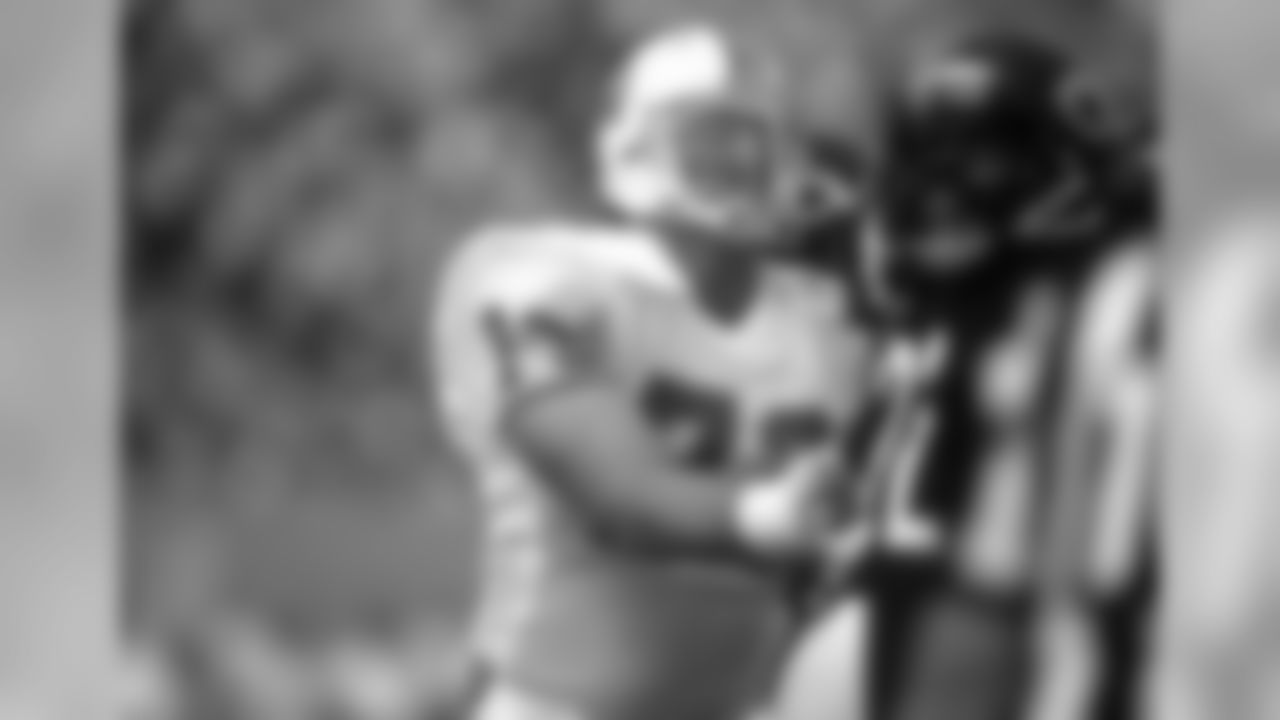
10 - OT Ron Heller
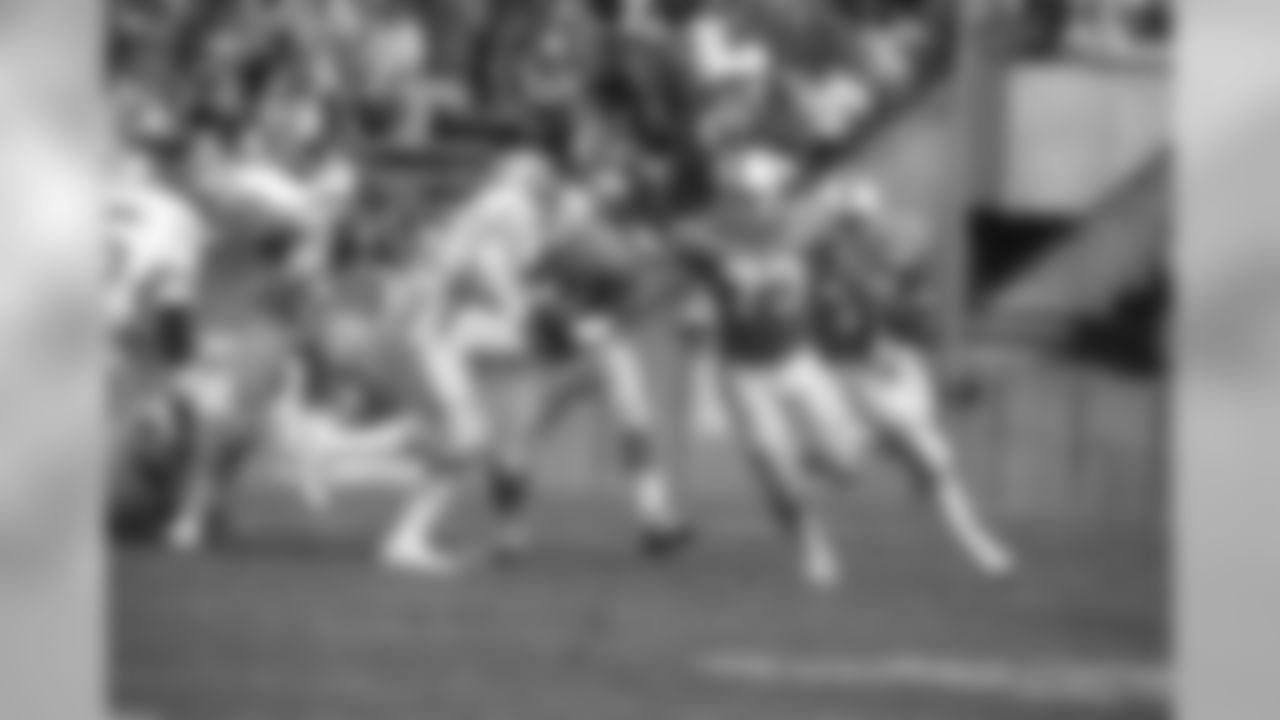
10 - OT Ron Heller

- LBs Kwon Alexander and Lavonte David

- LBs Kwon Alexander and Lavonte David
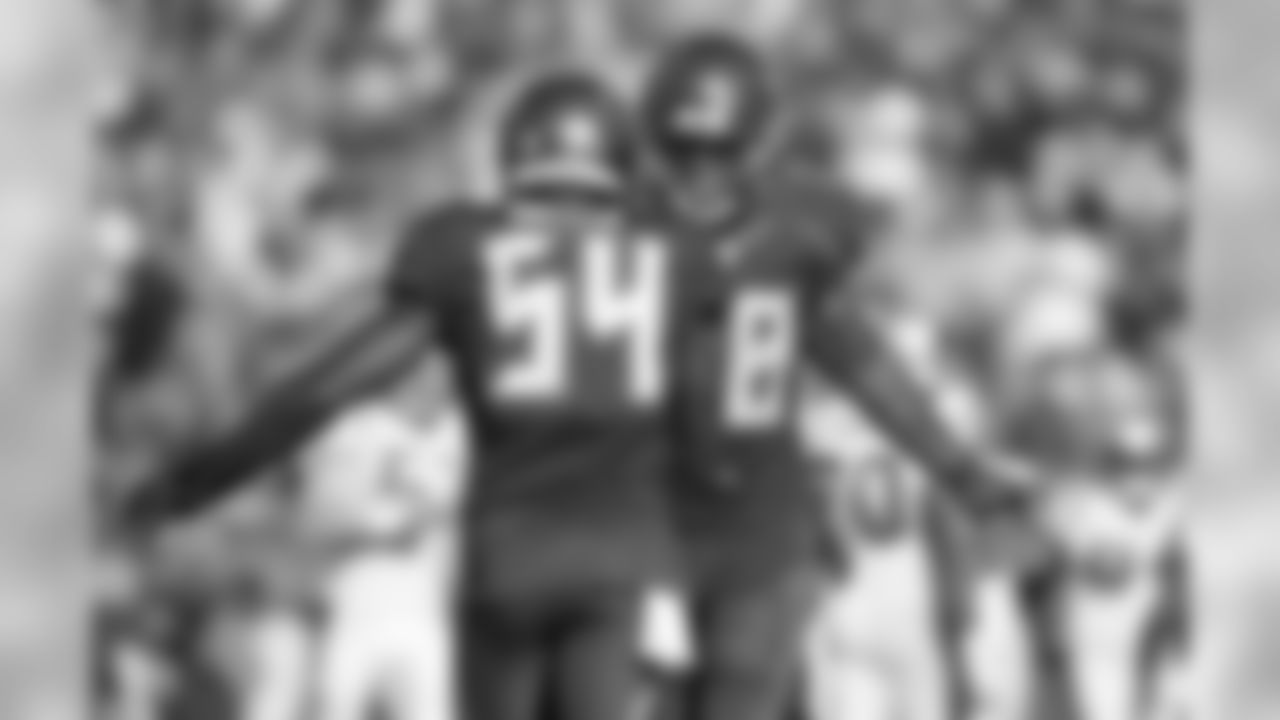
- LBs Kwon Alexander and Lavonte David
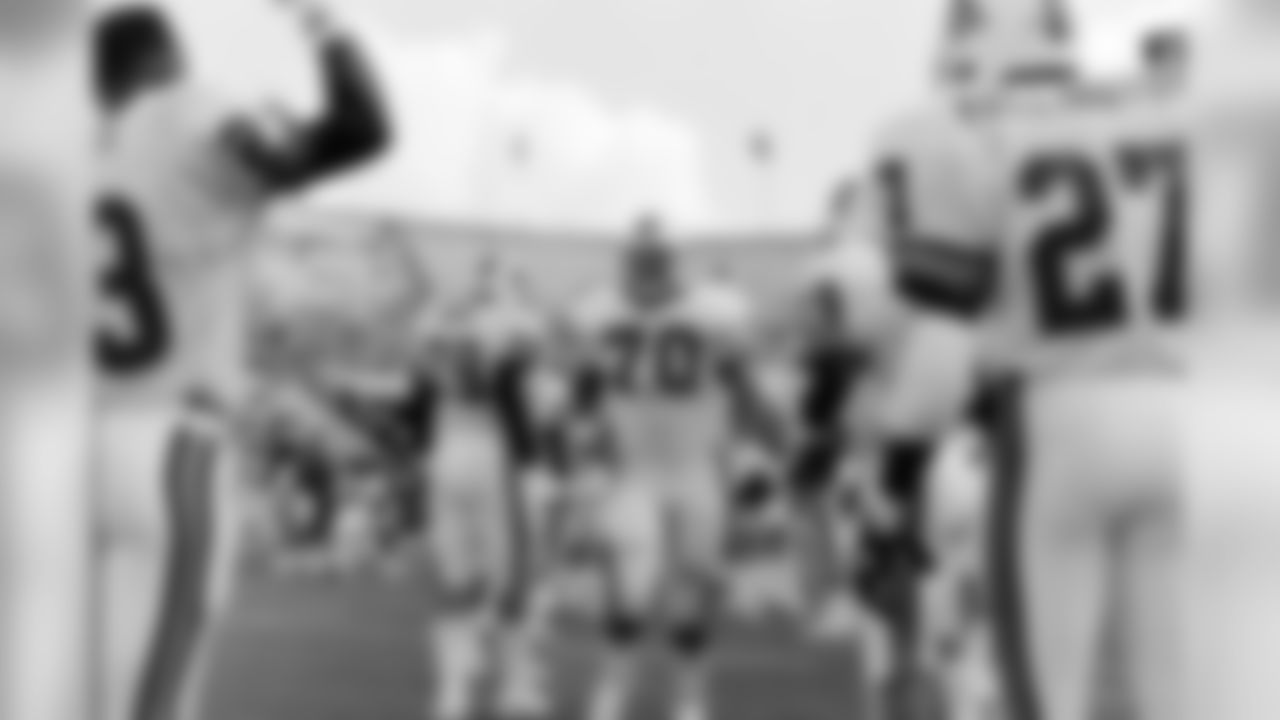
- DT Reuben Davis

- DT Reuben Davis

- DT Reuben Davis

- DT Santana Dotson

- DT Santana Dotson

- DT Santana Dotson

- DE Chidi Ahanotu

- DE Chidi Ahanotu

- DE Chidi Ahanotu

- C Tony Mayberry

- C Tony Mayberry

- C Tony Mayberry

- S John Lynch

- S John Lynch
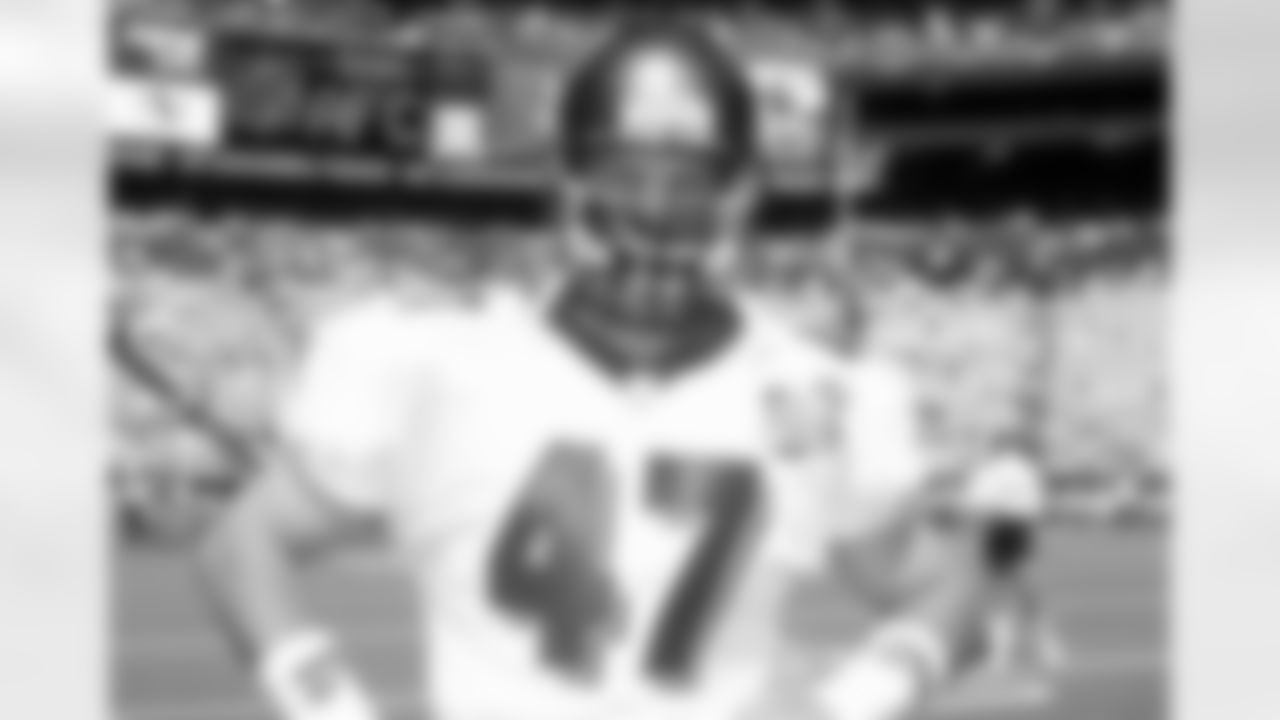
- S John Lynch

- DT David Logan

- DT David Logan

- DT David Logan

- LB Derrick Brooks

- LB Derrick Brooks

- LB Derrick Brooks

- CB Ronde Barber

- CB Ronde Barber
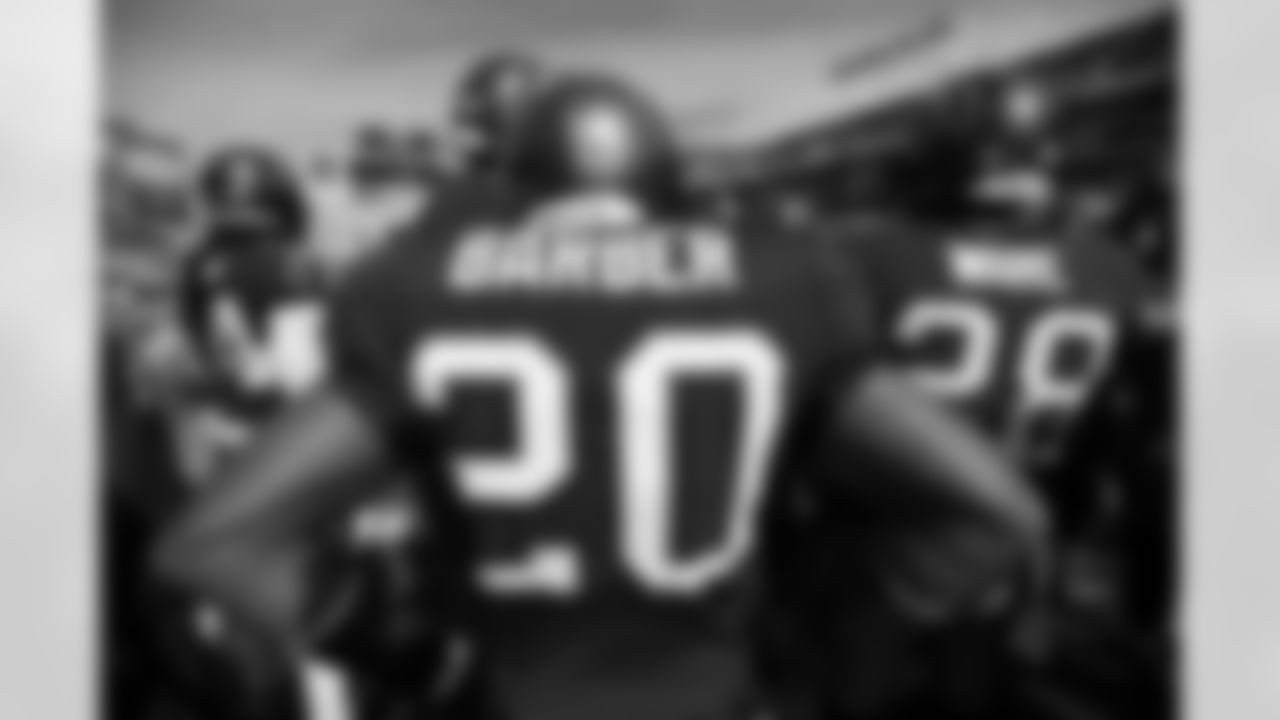
- CB Ronde Barber
Late last week, as NFL analysts continued to break down the 2017 draft in every way imaginable, ESPN's Mike Sando tackled the subject of "biggest draft steals." Sando gathered the opinions of four personnel evaluators for NFL teams to determine the steal of each of the draft's seven rounds, and the Tampa Bay Buccaneers' work featured prominently in the results. Tight end O.J. Howard and running back Jeremy McNichols were tabbed as the biggest steals in Rounds One and Five, respectively.
The Buccaneers were the only team to select the top choice in two different rounds; Jacksonville, New England, Seattle, Miami and Minnesota were credited with one each. Of course, with Howard, McNichols and the rest of the highlighted players still yet to play a single NFL game, this all still falls under the category of speculation. Tom Brady, we know for a fact, was a sixth-round draft steal. Terrell Davis, who just went into the Hall of Fame, was pure sixth-round thievery. Howard and McNichols look like steals to some NFL insiders who know the business well, but they still have to prove it.
Hopefully, Howard and McNichols still look like steals five or 10 years down the road. If so, they could join the list below. While we wait to find out the futures of the latest Tampa Bay newcomers, here are the Buccaneers.com picks for the 10 biggest draft steals in team history.
(Note: While some of the names below will rank among the top Buccaneers ever, this was not an exercise in simply picking the greatest performers in team history. We were looking for players who, in the long run, greatly exceeded the value one might expect to get from their draft slots. Jameis Winston may one day be considered the top quarterback in franchise history, but as the very first player picked in 2015, he wouldn't qualify as a "steal." We also shied away a bit from players in the first few team drafts, simply because the expansion roster was so thin that many late-round picks had a chance to play extensively. There were a lot of possibilities for this top 10 list, which is why we'll follow it with some very deserving honorable mentions. Our list is presented in ascending order, so the last player mentioned is our choice for biggest steal.)
10. Tackle Ron Heller (1984, Round 4, Pick #112)

There were six offensive tackles chosen in the 1984 draft before the Buccaneers grabbed Penn State's Heller with the very last pick of the fourth round. Tampa Bay had gained that selection by trading away offensive tackle Charley Hannah two years earlier, and that could have looked bad when Hannah went on to start 65 games over six years in Oakland. Fortunately, Heller proved to be a mid-round steal.
Heller stepped immediately into the starting lineup at right tackle for the Buccaneers and surely would have been a fixture there for a decade or more if not for a clash with new Head Coach Ray Perkins in 1987. Overall, Heller would play four seasons in Tampa, starting all but four games in which he appeared and accumulating an AV of 28 in that span according to Pro Football Reference. As a comparison, Dean Steinkuhler, drafted second overall that season by Houston and also an immediate starter at right tackle, accumulated 25 AV in that same span.
Steinkuhler, Ron Alt and William Roberts were all drafted before Heller and all went on to start more than 100 NFL games. None started more than Heller, however, who lasted a dozen years in the league and played in 172 games with 166 starts. Of course, this would be considered an even greater steal for the Buccaneers if he hadn't spent eight of those 12 years on other teams' rosters. The 1984 draft was almost a complete wasteland for Tampa Bay, but using a fourth-round pick on Heller was the one decision that paid off well.
9. Linebackers Kwon Alexander (2015, Round 4, Pick #124) and Lavonte David (2012, Round 2, Pick #58)

This is a bit of a cheat, but we couldn't resist linking these two players together. With just seven combined seasons in the NFL, these two still have plenty to prove, but it certainly looks like they will form the dynamic core of the Bucs' defense for many years to come.
Alexander has the distinction of being the only defensive player that General Manager Jason Licht drafted in his first two seasons at the helm. If you're only going to swing once, it's good to hit it this far. When the LSU product arrived in Tampa in the spring of 2015, it was initially thought that he would compete for the starting strongside spot. It wasn't long, however, before he was taking first-team reps at the more important middle, or MIKE, linebacker spot, and by training camp he had won that job from free agency import Bruce Carter. In his two seasons since, Alexander has proven to be the type of playmaking linebacker that one would expect to go in the first 40 or 50 picks of the draft. Despite missing four games as a rookie, Alexander ranks seventh in the NFL in tackles in his first two seasons, with 234. He also has eight sacks, three interceptions, three forced fumbles and 16 passes defensed.
Right behind Alexander on that 2015-16 tackle chart is David, who has been piling up stats that rank among the league's best since his 2012 arrival. Over the past five seasons, David ranks second among all NFL linebackers in tackles (663) and interceptions (10), in both cases just trailing former ninth-overall pick Luke Kuechly. He's also first among linebackers in tackles for loss (85), third in passes defensed (35) and seventh in forced fumbles (12).
Obviously, it takes a little bit more to be classified a steal as a second-round pick. David qualifies because the Bucs' never expected to land him in 2012. The team made a bold trade up into the bottom of the second round to get running back Doug Martin, another move that has paid off well. While the team was thrilled with that pick, the downside was that it became unlikely they would also be able to land David, one of their most coveted players. When David slipped farther into the second round than expected, the Bucs traded up again to land the former Nebraska star.
8. Defensive tackle Reuben Davis (1988, Round 9, Pick #225)

The NFL Draft is mercifully much shorter than it used to be. Teams used to pick for 12 rounds before it was shortened to eight in 1993 and then to its current setup of seven rounds in 1994. The vast majority of the players selected in the last third of the old marathon drafts never sniffed an NFL regular season.
Davis was a very big exception for the Buccaneers, in more ways than one. As a ninth-round pick in a league with four fewer teams, he was the equivalent of a mid-seventh-round pick in the current era, going at #225 overall. Not only did the former North Carolina player make the team as a rookie, he became an immediate starter. The 6-5, 300-pound interior lineman wasn't the team's most dynamic pass-rusher (10.5 sacks in 65 Buc games) but he was a very stout force in the 3-4 front the team utilized at the time. Davis played four-and-a-half seasons in Tampa and logged 65 games and 55 starts. He would also go on to play four more years in Phoenix and San Diego, eventually finishing with 139 games played and 122 starts. Very few ninth-round picks could make that claim.
7. Defensive tackle Santana Dotson (1992, Round 5, Pick #132)

Four years later, the Buccaneers hit with another later-round interior lineman, but this time he was a big-time pass-rusher.
Dotson arrived in Tampa with a chip on his shoulder, believing he should have been drafted out of Baylor much higher than the fifth round. He immediately provided evidence that he was right, racking up five sacks in his first three NFL games. Dotson would go on to set a Buccaneer rookie record with 10.0 sacks, double the franchise's previous mark. He played four seasons in Tampa – mostly on the inside but occasionally at defensive end – and racked up 23.0 sacks, 176 tackles, five forced fumbles and four fumble recoveries.
Continuing the theme of the bottom half of this list, Dotson's "steal" value is much higher when one considers his entire NFL career, which unfortunately unfolded outside of Tampa for its majority. Dotson used the early years of NFL free agency to jump to the Green Bay Packers, where he started for six more years, racked up 26 more sacks and won a Super Bowl.
There were 25 defensive linemen drafted before Dotson in 1992, including one (Mark Wheeler) by the Buccaneers. Only five finished with more career sacks, including only one defensive tackle, Chester McGlockton.
6. Defensive end Chidi Ahanotu (1993, Round 6, Pick #145)

The Buccaneers made astute late-round defensive line selections two years in a row. And while Dotson may have finished his career with a few more sacks than Ahanotu, the latter lasted far longer in Tampa Bay.
The versatile Cal product started out playing on the inside but soon proved that he could rush from the edge as well. He settled in as the starter at left end in 1994 and stayed there for the rest of the decade, other than an injury-plagued 1998 campaign. During that span, plus a brief eight-game return to the Buccaneers in 2004, Ahanotu racked up 34.5 sacks, which still ranks sixth in team history. Though he was in Buffalo when the Buccaneers won their first Super Bowl at the end of the 2002 campaign, Ahanotu was a starter during the franchise turnaround in the second half of the '90s and part of several terrifyingly good defenses. In all, he would play a dozen years in the NFL, appear in 174 games with 140 starts and record 46.5 sacks and 436 tackles.
The 23rd defensive lineman drafted in 1993, Ahanotu is one of only a handful of players in team history who have received the "franchise tag," a designation he got prior to the 1999 season, which led to a new long-term contract.
5. Center Tony Mayberry (1990, Round 4, Pick #108)

The Buccaneers actually got two long-term O-Line starters out of the middle rounds in 1990, but Mayberry gets the nod here because he went to three Pro Bowls and lasted three years longer with the team than fifth-round guard Ian Beckles.
There were only 10 players designated specifically as centers who were drafted in 1990, and Mayberry was the fourth of them. There were a total of 12 other offensive linemen selected before the Wake Forest product landed in Tampa, and few of them would end up with more than the 160 games and 145 starts logged by Mayberry. After starting the season opener in his rookie campaign, filling in for an injured Randy Grimes before going back to a reserve role, Mayberry would take over the center spot in 1991 and not miss a game or a start for the remainder of the '90s. A starter on the Bucs' playoff squads in '97 and '99, Mayberry was also selected to the Pro Bowl in those two seasons and the one in between. No other offensive lineman in franchise history has been to as many all-star games.
4. Safety John Lynch (1993, Round 3, Pick #82)

A two-sports star at Stanford, Lynch was already a promising hurler in the Florida Marlins' minor leagues when the 1993 draft rolled around. That almost surely contributed to the hard-hitting safety sliding to very nearly the end of the third round, and it also prompted then-Buccaneers Head Coach Sam Wyche to call Lynch looking for a commitment to football. Lynch convinced Wyche that football was his priority, the pick was made and the rest is history. Lynch has been a Hall of Fame finalist each of the last three years and may soon get the call from Canton.
(In terms of pick value, it should also be noted that the Buccaneers traded down 18 spots before selecting Lynch, raking in an extra fourth-rounder that brought in useful wide receiver Horace Copeland.)
Lynch's career got off to a relatively slow start as Floyd Peters and Rusty Tillman, his early defensive coordinators, couldn't find a use for his talents, trying to make him into a hybrid linebacker. It wasn't until Tony Dungy, Monte Kiffin and the Tampa Two defense arrived in 1996 that his career really took off. He was a Pro Bowler by 1997, an honor he would repeat eight more times and a first-team All-Pro by 1999.
Known as one of the hardest-hitting defenders of his generation, Lynch played 15 years in the NFL, the last four in Denver, and 1,277 tackles, 26 interceptions, 16 forced fumbles and 13.0 sacks. He gained the nickname, "The Closer," because most of his big plays and takeaways came at key moments in close games.
There were 43 defensive backs drafted in 1993, of which Lynch was the 16th. The other 42 combined to earn one more Pro Bowl berths than Lynch did by himself.
3. Defensive tackle David Logan (1979, Round 12, Pick #307)

Logan was another very late selection in the days of the marathon drafts. The Bucs drafted the likes of Henry Vereen and Bob Rippentrop, neither of whom ever played a down in the NFL, before landing on the Pitt defender near the end of the league's 330-pick weekend.
If the 307th-overall pick makes a team's roster, that's more than enough to call it a worthwhile selection. When he becomes a regular for most of a decade and a 103-game starter, that's one of the best value picks in franchise history, period. Logan not only recorded 39 sacks but he also scored an incredible four defensive touchdowns, some of them at iconic moments in franchise history. For instance, his fumble return for a score in the 1981 season finale in Detroit clinched a victory for Tampa Bay that sent the Bucs to the playoffs and the Lions home.
Logan ranks fourth all-time in franchise history in sacks, and 10th in tackles. In 1983, when he had a career-high 9.5 sacks and a 54-yard fumble return for a touchdown, Logan was named the NFL's "Most Underrated Player" by Sports Illustrated. According to Pro Football Reference, Logan accumulated an AV of 51, which ranks 21st among all players in franchise history. Of the 20 players above him, 14 started their careers with Tampa Bay. Six were first-round picks, three were second-round picks, two were third-round picks, one was a fourth-round pick and one was a sixth-round pick. Only linebacker Cecil Johnson, an undrafted free agent in 1977, cost less draft capital for the Buccaneers than Logan.
2. Linebacker Derrick Brooks (1995, Round 1, Pick #28)

Brooks is the only first-rounder to make our list, though his fellow '95 first-round pick and fellow Hall-of-Famer Warren Sapp could have a case. As the 12th player selected and the fourth defensive lineman off the board, Sapp certainly proved that he should have gone higher. Still, it's hard to be a true steal when you're one of the first dozen prospects off the board.
Brooks, on the other hand, went 28th after the Buccaneers traded back up into the round to get a player they felt was being undervalued. The former Florida State star likely slipped because he was considered undersized, but he would go on to help redefine what teams look for in the linebacker position. Listed at 6-0 and 229 pounds in the Bucs' 1995 media guide, Brooks was nearly the exact same size as current Tampa Bay standout linebacker Lavonte David.
Most arguments about the best player in franchise history would begin with the team's three current Hall-of-Famers, Brooks, Sapp and defensive end Lee Roy Selmon. Selmon was the first-overall pick in 1976 and Sapp, as noted above, went 12th in '95. Brooks, who conceivably might have dropped out of the first round altogether if the Bucs hadn't traded up (Cleveland did take a linebacker, Craig Powell, two spots later), represents the greater draft value and was absolutely a steal. He ranks first on that aforementioned PFR list of most AV in Buc history, and it's not particularly close.
Brooks played his entire 14-year NFL career in Tampa, going to the Pro Bowl a franchise-record 11 times, including every year from 1997 through 2006. He was a first-team All-Pro selection five times, also a team record. He is the franchise's all-time leader in tackles with 2,198, nearly 700 ahead of the second player on the list, and he also ranks fifth with 25 interceptions.
In 2002, Brooks was named the NFL's Defensive Player of the Year as he scored four defensive touchdowns during the regular season and led the Buccaneers to their first Super Bowl championship. He even capped that 48-21 Super Bowl XXXVII win over Oakland with yet another pick-six late in the fourth quarter. We could go on, but it hardly seems necessary. In fact, even as a first-round pick, Brooks would probably be the greatest draft steal in team history if not for…
1. Cornerback Ronde Barber (1997, Round 3, Pick #66)

Barber may soon work himself into that argument over the greatest player in franchise history, particularly if he ends up in the Hall of Fame. As the only man in NFL history to record at least 40 interceptions and at least 25 sacks, he would seem to have a very strong case for Canton.
In the meantime, Barber is the greatest draft steal the Buccaneers have ever pulled off. The 1997 draft was considered top-heavy in cornerback talent, with six of them going in the first round, including four in the first 11 picks. Another four corners were drafted in the second round, along with six safeties, before the Buccaneers finally made Barber the 17th defensive back drafted early in the third round. Barber's own twin brother, running back Tiki Barber, was drafted 30 spots before him. Several of those defensive backs taken in the first two rounds went on to excellent careers, including Shawn Springs and Sam Madison, but none boast a resume more impressive than Barber's.
Like Brooks, Barber played his entire career for the Buccaneers, a run that spanned 16 years and a team record 242 games played and 232 starts. He never missed a game due to injury in his entire NFL run, and he holds the NFL record for most consecutive starts made by an NFL cornerback. Barber stands second only to Brooks in franchise history in terms of AV.
The Buccaneers' all-time leader in interceptions, with 47, Barber also racked up 28.0 sacks. Perhaps his most impressive statistic, however, is his 14 touchdowns; he ranks third in league history, behind only Devin Hester and Deion Sanders, in that category. Barber is also second in team history in tackles, behind only Brooks.
Tampa Bay started its 1997 draft by using both of its first-round picks on offense, grabbing running back Warrick Dunn at #12 and wide receiver Reidel Anthony at #16. The team then used its next two selections to shore up the offensive line with Jerry Wunsch and Frank Middleton. Even after all of that, they were able to find one of the most impactful players in franchise history in the third round, after 65 other prospects had already been selected. What a steal!
...
Honorable mentions: OL Steve Wilson (1976, Round 5, Pick #154); WR Gerald Carter (1980, Round 9, Pick #240); LB Jeff Davis (1982, Round 5, Pick #128); LB Chris Washington (1984, Round 6, Pick #142); WRs Mark Carrier (1987, Round 3, Pick #57) and Bruce Hill (1987, Round 4, Pick #106); S Marty Carter (1991, Round 8, Pick #207); OL Jim Pyne (1994, Round 7, Pick #200); CB Donnie Abraham (1996, Round 3, Pick #71); LB Geno Hayes (2008, Round 6, Pick #175); WR Mike Williams (2010, Round 4, Pick #101).





















